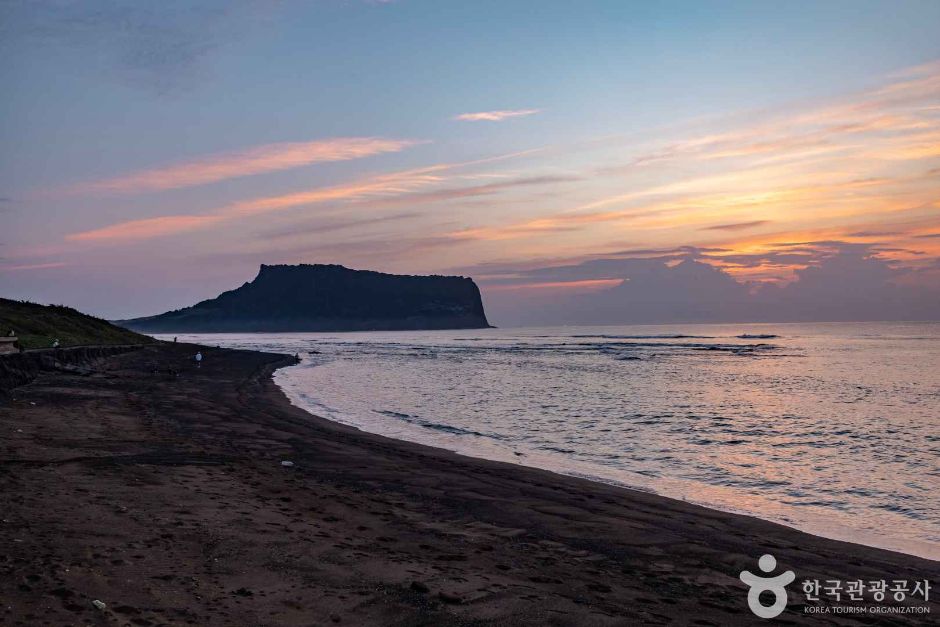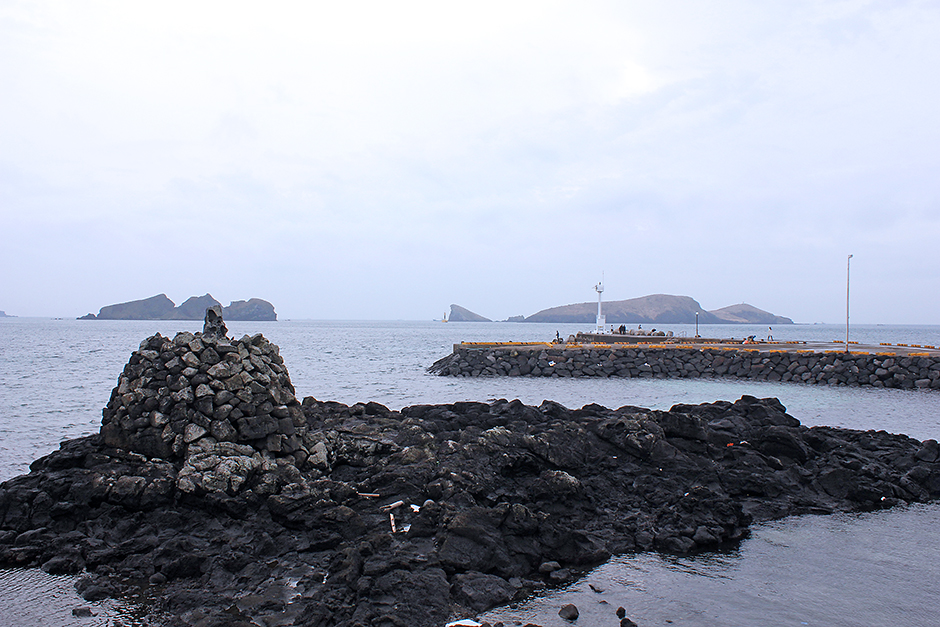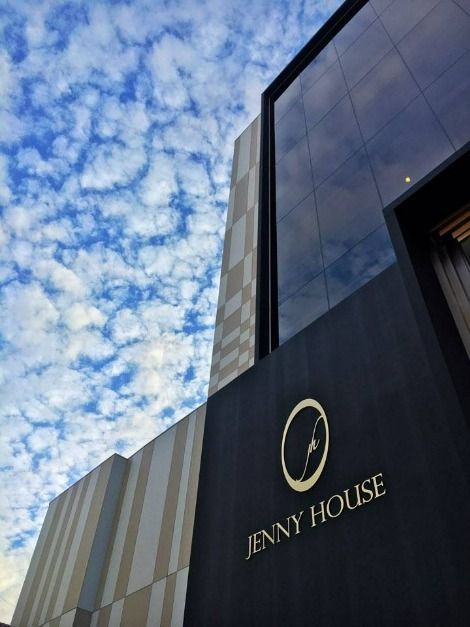Gwangchigi Beach (광치기해변)
2025-04-07
Goseong-ri, Seongsan-eup, Seogwipo-si, Jeju-do
Located on the way from Seongsan Ilchulbong Tuff Cone to Seopjikoji, Gwangchigi Beach marks the end point of Jeju Olle Trail Route 1 and the starting point of Route 2. It is known for its unique geological formation, where hot lava cools down immediately upon meeting the sea. During low tides, visitors can see hidden scenic spots. The frozen lava covered with green moss, creates a spectacular view. In particular, the stunning sunrise view with Seongsan Ilchulbong Tuff Cone in the backdrop attracts a lot of visitors. The beach is also known for its black sand. (Information courtesy: Visit Jeju)
Yongsu Port (용수항)
2025-04-07
Yongsu-ri, Hangyeong-myeon, Jeju-si, Jeju-do
Yongsu Port is a small fisihing port located in the Yongsu-ri area of Jeju. It marks the end point of the Jeju Olle Trail Route 12 and the starting point of Jeju Olle Trail Route 13. The port offers a beautiful blue silhouette view of Chagwido Island, the biggest uninhabited island in Jeju. On both sides of the village, visitors can find Bangsatap towers, which are believed to protect the village.
Kansong House (간송옛집)
2025-04-01
149-18 Sirubong-ro, Dobong-gu, Seoul
The 100-year-old traditional hanok Kansong House sits by the burial mound of Kansong Jeon Hyeong-pil (1906-1962), who played a significant role in preserving the cultural heritages of Korea during the Japanese colonial period. This house was orginally built by Kansong's adoptive father Jeon Myeong-gi (1870-1919) to us as a storage facilities for harvested agriculture from the northern Gyeonggi-do and Hwanghae. After his father's death, Kansong used the house as a ritual house for his father and often stayed here. Some damages were done to the house during the Korean War, and partial repair was made after his death.
Jennyhouse (제니하우스)
2025-03-15
56 Seolleung-ro 146-gil, Gangnam-gu, Seoul
010-5689-1484
Step into Jennyhouse, Korea’s top luxury beauty salon, for an unforgettable hair and makeup transformation. Renowned for its exceptional service and artistry, Jennyhouse is where celebrities like Son Ye-jin, Han Ji-min, and Suzy achieve their iconic looks.
Upon booking a reservation, clients can choose from a range of services tailored to their style and needs. Whether it’s a glamorous red-carpet makeover, a trendy K-beauty hair transformation, or elegant wedding styling, Jennyhouse's team of 80 expert artists ensures a personalized experience.
Expect cutting-edge techniques, top-tier products, and meticulous attention to detail. Jennyhouse offers the experience for clients to embrace the best of K-beauty and leave with a look that’s uniquely theirs. At Jennyhouse, every client walks out feeling confident, radiant, and ready to shine.
Ttangkkeut Observatory (땅끝전망대)
2025-02-03
100 Ttangkkeunmaeul-gil, Songji-myeon, Haenam-gun, Jeollanam-do
The edge of the Haenam is referred to as ttangkkeut, which literally means at the end of the land. Located on Galdusan Mountain, the Ttangkkeut Observatory provides a panoramic view spanning from Jindo Island to Wando Island. The first floor of the observatory features a photo booth, where visitors can take pictures with Haenam’s Mascot and Ttangkkeut Village in the background. The café on the first floor provides visitors an opportunity to rest. Even though the observatory is easily accessible by walk, it is recommended to take the monorail, which offers a beautiful view of the Ttangkkeut Village.
Jin Convalescent Hospital (진요양병원)
2025-10-23
33, Daejasil-ro, Buk-gu, Gwangju
Jin Convalescent Hospital is a Ministry of Health and Welfare-certified cancer rehabilitation hospital located in Unam-dong, Buk-gu, Gwangju. We provide personalized care tailored to each patient’s condition and symptoms, focusing on specialized programs for cancer patients while utilizing the latest equipment and technology. Our commitment is to prioritize patients’ health and wellness. In 2024, we were designated a foreigner-friendly hospital in Gwangju, offering internal medicine consultation, a wellness clinic, comprehensive blood tests, obesity treatments, and an integrated pain clinic combining Western and Korean medicine for international patients. Experience compassionate, patient-centered care and expert medical treatment here with us.
Lee & Chaeum Skin Clinic (리앤채움의원)
2025-10-23
4F, 837, Nonhyeon-ro, Gangnam-gu, Seoul
Lee & Chaeum Skin Clinic offers medical semi-permanent makeup procedures through a collaboration between beauty technicians and experienced medical professionals.
We provide a range of treatments, including eyebrow, scalp, hairline, lip, and eyeliner tattoos, with personalized solutions and a comprehensive aftercare program.
The clinic holds a patented 3D micro needle technology for natural results, and our Chaeum Pigment has received Dermatest Seal and trademark registration from the Korean Intellectual Property Office, ensuring superior results for our clients.
As a designated hospital of the Korean Film Actors Association (KFAA), we contribute to the growth of K-beauty.
Design Plastic Surgery Clinic (디자인성형외과의원)
2025-11-26
10F, 785, Gaya-daero, Busanjin-gu, Busan
"Plastic surgery is ultimately about design!"
Located in Seomyeon, Busan, Design Plastic Surgery Clinic features two board-certified plastic surgeons who provide personalized one-on-one care throughout the entire process, from consultation to surgery and post-operative management. Specializing in breast surgery, the clinic also offers a wide range of procedures, including facial rejuvenation, lifting, eye and nose surgery, fillers, and skincare treatments, helping clients achieve their ideal look. For breast surgery consultations, we offer detailed discussions using a 3D virtual simulation program, pre- and post-operative ultrasound examinations, private recovery rooms, shampoo services, and a comprehensive aftercare process lasting up to six months. With years of seamless collaboration, our plastic surgeon duo is dedicated to crafting natural beauty.
Kleam Clinic (클림의원)
2025-10-23
3F, 141 Yanghwa-ro, Mapo-gu, Seoul
Kleam Clinic is a leader in K-beauty innovation, and they discover the unique, radiant beauty of customers from around the globe.
Kleam Clinic is sought after by many customers as it is known for its excellent procedural competence, honest pricing, and use of genuine products. Additionally, the clinic provides interpretation services in English, Chinese, Japanese, and Thai for international clients. Additionally, the clinic offers airport pick-up and drop-off services, hotel bookings, and tax-free services, allowing foreign visitors a hassle-free one-stop procedure.
The clinic is open from Monday through Sunday so patients can conveniently get consultations on holidays as well.
Ttangkkeut Tower & Skywalk (땅끝탑 스카이워크)
2025-02-03
Songho-ri, Songji-myeon, Haenam-gun, Jeollanam-do
Ttangkkeut Tower is a triangle monument commemorating the southernmost tip of the Korean peninsula. The Skywalk was remodeled using glass material with the theme of “taking one step beyond the end of the land,” symbolizing the end the beginning of the Korean peninsula. The skywalk made with transparent glass panels, offers visitors the thrill of walking above the sea. The installed photo booth provides visitors a chance to click great pictures with the vast blue sea in the background on one side and the Ttangkkeut Tower on another. It is also renowned for stunning sunset views.






 English
English
 한국어
한국어 日本語
日本語 中文(简体)
中文(简体) Deutsch
Deutsch Français
Français Español
Español Русский
Русский